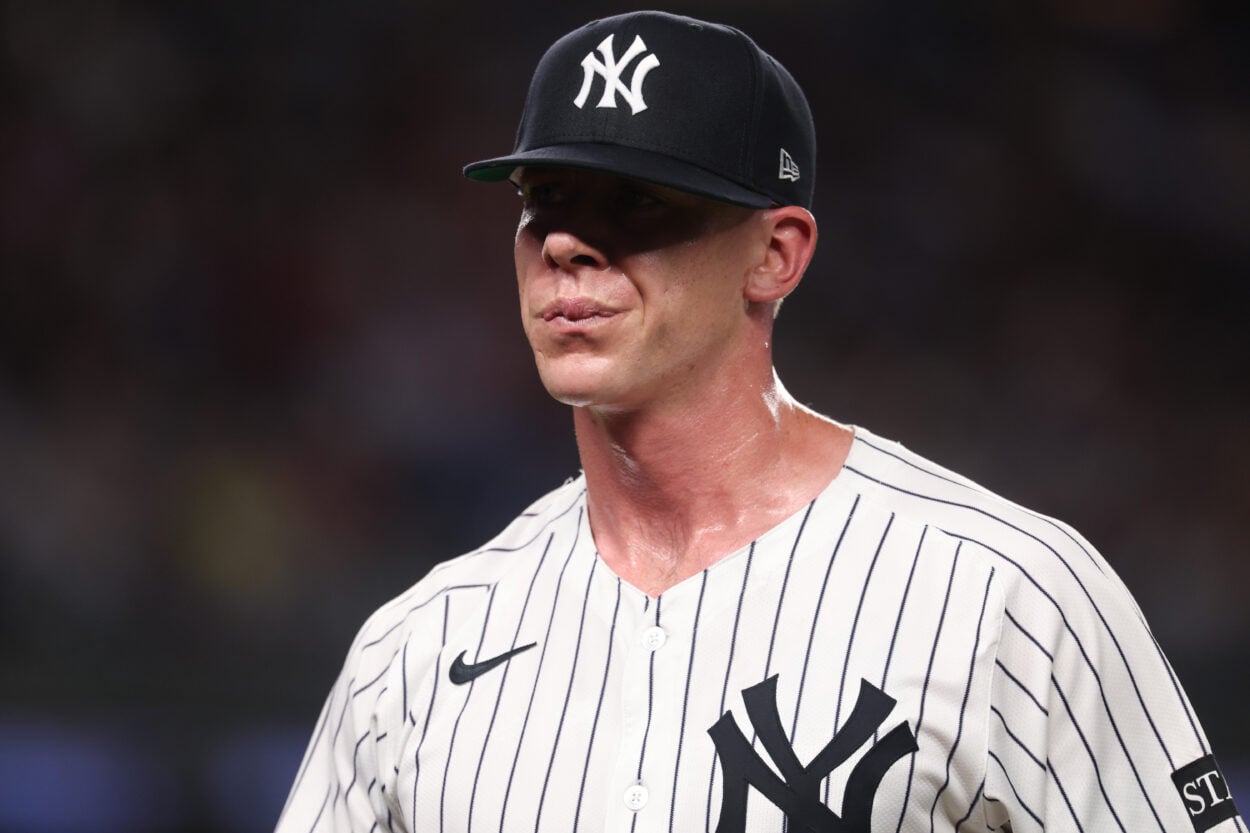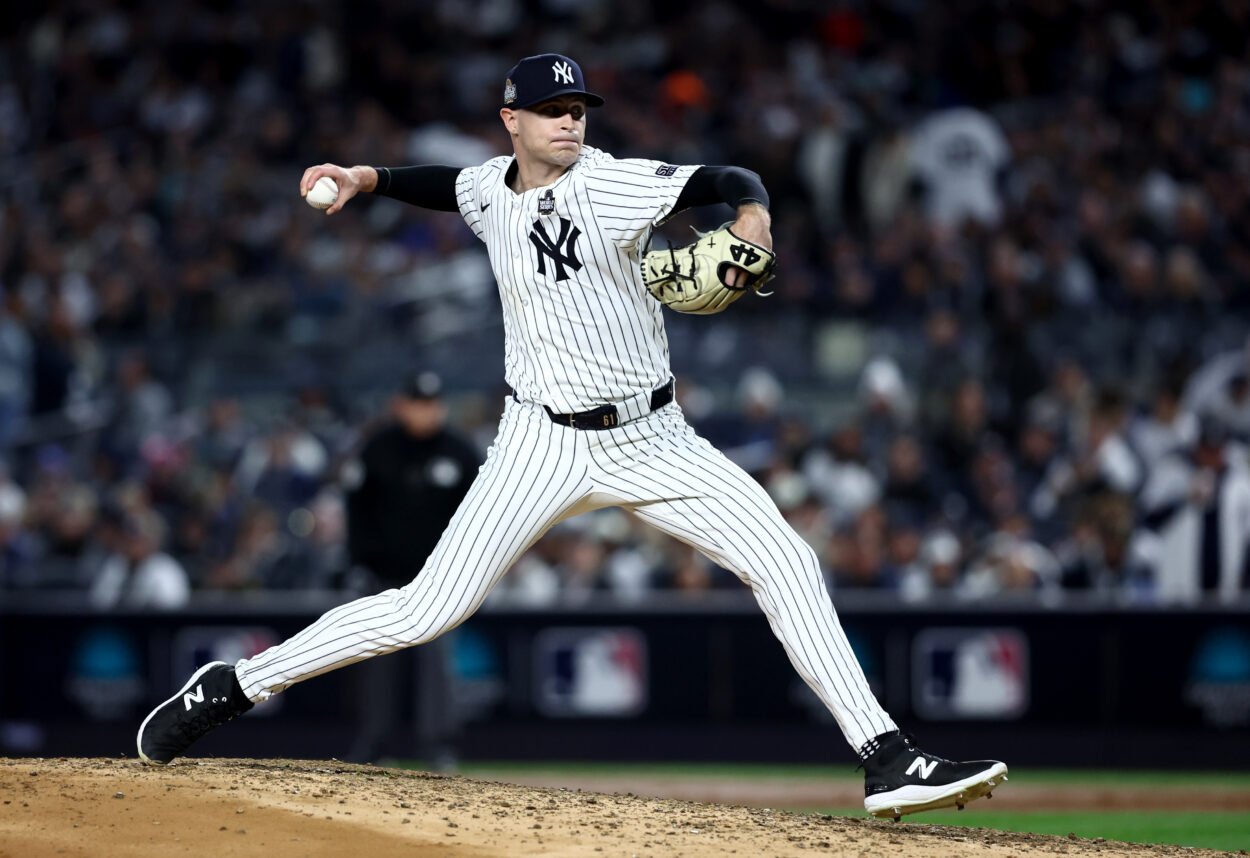
A front office’s winter usually turns on the big moves, but sometimes the story is in the edges of the roster. That’s where the New York Yankees spent their Friday, trimming, sorting, and deciding who still fits in a picture they hope looks a lot sharper by Opening Day. Arbitration deadline day tends to force clarity. This one did exactly that.
A Necessary Reset Around the Margins
The Yankees walked into the deadline with 14 arbitration-eligible players, an unusually heavy group for a roster already in transition. Anyone paying attention knew they weren’t keeping all of them. Five pitchers were cut loose, each for a different set of reasons but all tied together by the same theme: the Yankees want reliability in 2026, not questions stacked on more questions.
Michael Arias was the least surprising. He arrived from the Cubs last January as an intriguing arm, a guy with stuff worth squinting at, but his season in the system never stabilized. He logged 29.2 innings across three levels with a 2.73 mark mostly in relief, but the strikes weren’t there consistently enough for the Yankees to project a meaningful role. Command issues have no patience on a roster already juggling uncertainty.
Jake Cousins was a tougher one. He actually mattered for the 2024 Yankees, but Tommy John surgery knocked him out in June 2025. With the typical recovery timeline meaning he would likely miss all of 2026 too, the Yankees couldn’t justify carrying him through two inactive seasons. It’s the cold math of roster construction.

The Cost of Lost Momentum
Ian Hamilton’s story sits in a different category. After emerging as a major weapon in 2023 and enjoying a solid, if unspectacular 2024, everything unraveled in 2025. A viral illness in the spring slowed him, blister problems lingered and the sharpness that once made him look like a bullpen staple never returned. A 4.28 ERA in 40 innings isn’t a death sentence for a reliever, but the Yankees clearly weren’t convinced the old version was coming back.
Scott Effross faced a similar uphill road. Elbow and back surgeries stalled what had once been one of the more quietly effective bullpen profiles in the game. The Yankees invested patience in his rehab, but the velocity and movement never quite recovered. Mark Leiter Jr., meanwhile, had the swing-and-miss numbers the team covets but also the inconsistency they increasingly refuse to tolerate. A 4.84 ERA across an erratic season was enough evidence that the fit wasn’t ideal anymore.

These aren’t blockbuster cuts, but they do tell you something about where the Yankees are mentally. They’re shifting from “maybe he bounces back” speculation to a more sober approach: if a role isn’t clear, move on.
The Players Who Stayed
The Yankees did keep a significant group, tendering contracts to Jazz Chisholm Jr., Luis Gil, Anthony Volpe, Jose Caballero, Fernando Cruz, Jake Bird, Camilo Doval, and David Bednar. That’s a mix of core young talent, rotation upside, and high-leverage bullpen security. It’s also the spine of what the Yankees hope will be a more stable 2026 roster.
They also got early agreements done with Clarke Schmidt and Oswaldo Cabrera, avoiding arbitration entirely. Schmidt continues rehabbing but remains in their long-term pitching plans. Cabrera, as always, offers versatility, energy and enough bat-to-ball skill to help the team weather the long season.
What the Decisions Reveal
None of Friday’s choices were loud, but together they sketch the outline of how the Yankees intend to build. They want bullpen depth they can trust, not rehab projects. They want positional flexibility without sacrificing production. Most importantly, they’re trying to cut away the gray areas that bogged down last season’s roster management.
The question now is what they add on top of this foundation. Tendering the right names is one thing. Turning the roster into a winning group is something else entirely. But for once, the Yankees look willing to let go of the maybes and invest in what’s actually working. In today’s league, that’s not just strategy. It’s survival.
